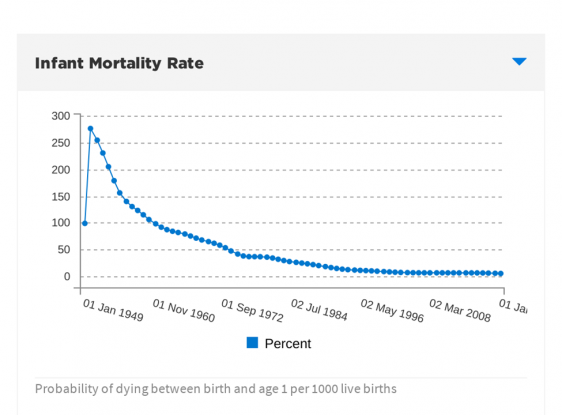Healthcare is an essential component of any nation’s infrastructure. It ensures that the population has access to medical care when needed, which is vital for maintaining good health and well-being. Singapore is one of the few countries that have managed to build a healthcare system that provides quality care at affordable prices. The country’s healthcare system has consistently ranked among the top five in the world, making it an excellent case study for other countries looking to improve their healthcare systems. Today, we will discuss Singapore’s healthcare system, the key features that make it successful, and the lessons Pakistan can learn from it.
Singapore’s Healthcare System: An Overview
Singapore’s healthcare system is a mixed system that combines public and private healthcare providers. The government regulates the healthcare industry and provides significant funding for public healthcare services. The country’s healthcare system is built around three pillars: affordability, accessibility, and quality of care.
Affordability
Singapore’s healthcare system is affordable for everyone. The government provides subsidies for healthcare services, and the country has a mandatory healthcare savings scheme called “Medisave”. Medisave is a personal savings account that Singaporeans and permanent residents use to pay for their healthcare expenses. Employers also contribute a portion of their employees’ salaries to Medisave.
Accessibility
Singapore’s healthcare system is accessible to all citizens and permanent residents. The country has an extensive network of healthcare facilities, including hospitals, clinics, and polyclinics, which provide a wide range of medical services. The government has also implemented initiatives to improve access to healthcare services for vulnerable populations, such as the elderly, low-income families, and people with disabilities.
Quality of care
Singapore’s healthcare system provides high-quality care, and its healthcare outcomes are among the best in the world. The country’s healthcare providers use evidence-based practices, and the healthcare system prioritizes preventive care and early intervention to prevent more for serious health problems from developing. The country has also invested heavily in healthcare technology, which has improved the efficiency and effectiveness of healthcare services.
Statistics on Singapore’s Healthcare System
Life Expectancy
Singapore has one of the highest life expectancies in the world, with an average life expectancy of 84 years. This is significantly higher than the global average of 73 years.
Read More: Singapore: The Reason Behind Its Economic Success – About Pakistan
Infant Mortality Rate
Singapore has one of the lowest infant mortality rates in the world, with a rate of just 1.7 deaths per 1,000 live births. This is much lower than the global average of 28 deaths per 1,000 live births.

Healthcare Expenditure
Singapore spends approximately 4.9% of its GDP on healthcare. This is significantly lower than other developed countries, such as the United States, which spends around 17.7% of its GDP on healthcare.
Doctor-to-Patient Ratio
Singapore has a high doctor-to-patient ratio, with approximately 2.5 doctors for every 1,000 people. This ensures that patients have access to high-quality healthcare services and can receive timely treatment.
Lessons for Pakistan
Strengthening Primary Care
One of the key lessons Pakistan can learn from Singapore’s healthcare system is the importance of strengthening primary care. In Singapore, primary care plays a critical role in the healthcare system. Primary care providers are often the first point of contact for patients, and they focus on preventive care and managing chronic conditions. This approach has led to better health outcomes and lower costs.
In Pakistan, primary care is often neglected, and patients often bypass primary care providers and go directly to specialists. This approach is costly and often results in poorer health outcomes. To improve its healthcare system, Pakistan should focus on strengthening primary care. This could involve initiatives to train more primary care providers, investing in primary care facilities, and implementing preventive care programs to address common health problems.
Using Technology to Enhance Healthcare
Another lesson Pakistan can learn from Singapore’s healthcare system is the importance of using technology to enhance healthcare. Singapore has been at the forefront of healthcare technology and its healthcare providers use technology to improve the quality and efficiency of healthcare services.
For example, Singapore has implemented a National Electronic Health Records (NEHR) system that allows healthcare providers to access patient records and share information with other providers. This system has improved the quality of care by reducing errors and improving communication between providers.
Pakistan can adopt similar strategies by investing in healthcare technology, such as telemedicine and electronic medical records. These technologies can improve access to healthcare services, especially for people living in rural areas, and can help healthcare providers deliver more effective care.
Implementing Mandatory Health Savings Accounts
In Singapore, every citizen and permanent resident is required to contribute a portion of their income to their Medisave account. This account is used to pay for healthcare expenses, and the government also provides additional subsidies for low-income families and elderly citizens. This system has helped to ensure that everyone in Singapore has access to affordable healthcare services.
Pakistan could implement a similar system to ensure that everyone has access to healthcare services. According to the World Health Organization, only about 3% of Pakistan’s GDP is spent on healthcare, which is one of the lowest levels in the world. Implementing a mandatory health savings account system could help to increase healthcare funding and ensure that everyone has access to healthcare services.
Collaborating with the Private Sector
Another lesson Pakistan can learn from Singapore’s healthcare system is the importance of collaborating with the private sector. Singapore has successfully partnered with private healthcare providers to improve healthcare services. Private healthcare providers in Singapore must adhere to the same quality standards as public healthcare providers, and the government provides subsidies for private healthcare services to ensure that they are affordable for everyone.
In Pakistan, the private healthcare sector is often seen as unregulated and expensive, leading to unequal access to healthcare services. However, the private sector can play an important role in improving healthcare services, especially in areas where public healthcare services are lacking. By partnering with private healthcare providers and regulating the private healthcare industry, Pakistan can improve healthcare services and ensure that everyone has access to quality care.
Read More: What Pakistan Can Learn from Europe’s Airport Infrastructure and Services – About Pakistan
Singapore’s healthcare system sets a high standard for quality care, and there are valuable lessons that Pakistan can learn from its approach. By focusing on strengthening primary care, investing in healthcare technology, implementing mandatory health savings accounts, and collaborating with the private sector, Pakistan can improve its healthcare system and ensure that everyone has access to quality healthcare services. With healthcare being a fundamental right of every citizen, it is essential that Pakistan takes steps to improve its healthcare system and provide affordable and quality healthcare services to all its citizens.

















